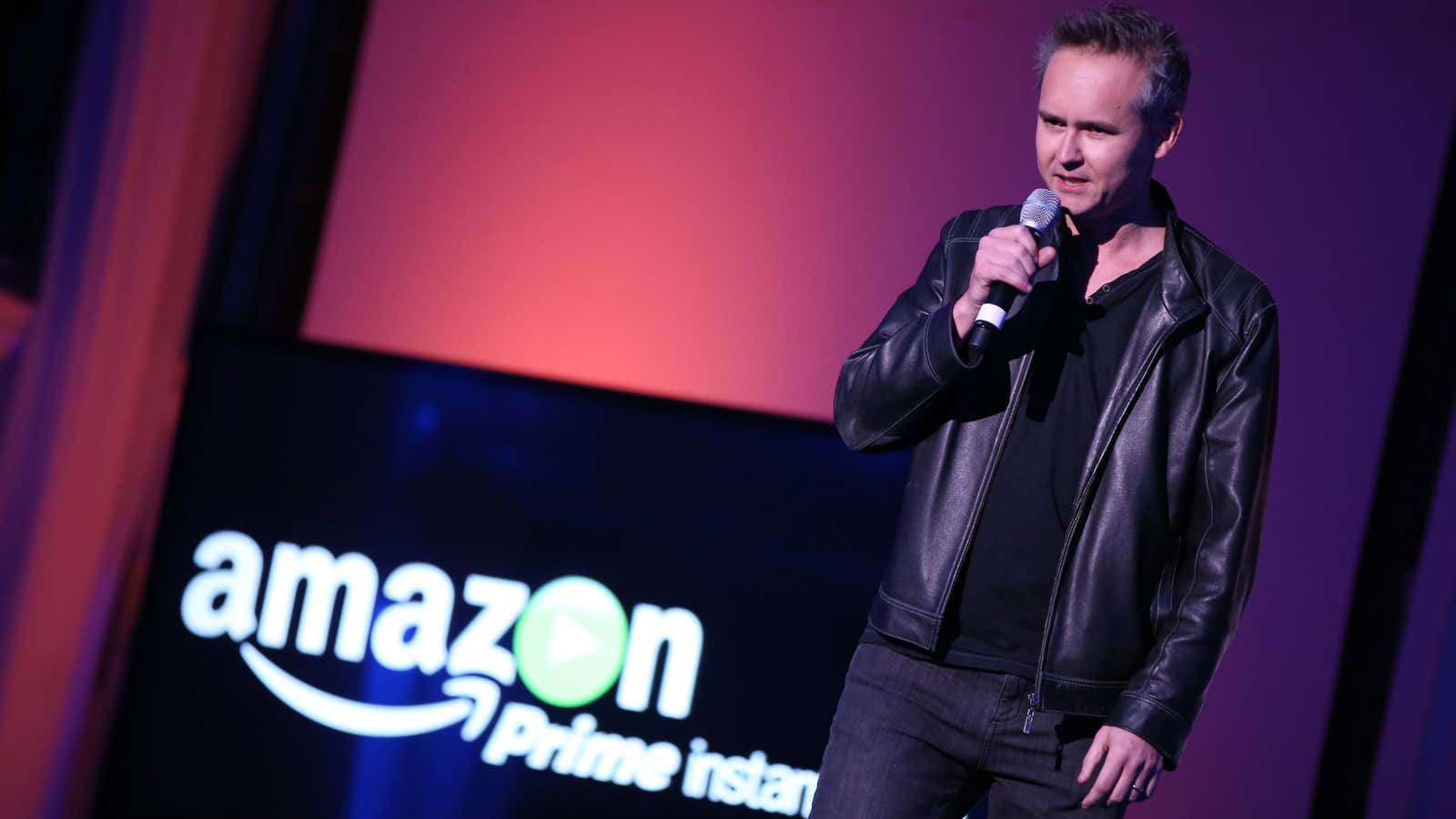The battle for streaming supremacy heats up again on Friday Nov. 15, when Amazon launches its first original series, Alpha House, the story of four senators who rent a house together in Washington, D.C. While the title and genre may be reminiscent of one of Netflix’s popular series, Amazon has a plan to keep viewers hooked—and buzzing—for longer than those who binge-watched House of Cards earlier this year.
Instead of debuting an entire season’s worth of episodes at once, Amazon will make the first three episodes of each series available for free to anyone with an Amazon account via Amazon Instant Video. In Germany and the UK, the shows will be viewable on the LoveFilm streaming service, which Amazon owns, since Instant Video is service only offered in the US. After that, one new episode will debut each week, exclusively to Amazon Prime subscribers via Prime Instant Video. Each debut season spans 11 episodes, and Amazon is spending an estimated $1-2 million per episode on its new programming, which is far less than the $100 million Netflix shelled out for 26 House of Cards episodes.
Amazon Studios Director Roy Price said it opted for a weekly release schedule “so that customers can chat about the shows and build up anticipation,” adding that the Netflix release model kills the conversation and buildup that surrounds a traditional release of a TV show. Since Netflix refuses to release any ratings data on its programming, there is no way to tell how many people have actually viewed its original series, or how many debut episodes were viewed as compared those later in the season.
Amazon’s approach allows viewers to sample multiple episodes at once, hoping to get them hooked and then return week after week. This is the raison d’être for Amazon’s foray into original programming: to engage its 11 million Prime members (out of 215 million customers worldwide) so that they will spend money elsewhere on the site.
Prime members, who pay $79 a year to enjoy two-day shipping and access to more than 40,000 streaming movies and TV shows, reportedly spend up to three times more on the site than non-members, in the process generating one-third of Amazon’s operating income. (The company is on track for $75 billion in sales this year.)
For Netflix, the subscribers are the income, and by that measure it easily has the upper hand, with 31.1 million streaming subscribers (29.9 million of them paying) in the US to Amazon Prime’s 11 million. And it also trounces Amazon when it comes to how much programming is actually streamed. A new study by Sandvine (pdf), a broadband internet service provider, found that Netflix used almost 20 times more bandwidth during September primetime hours than Amazon.
Unfortunately, we won’t know which of the two approaches to programming original series will win out. Amazon, like Netflix, won’t be releasing ratings data. But if Amazon can indeed keep viewers enthusiastic about its new shows for weeks and months on end—and buying more products along the way—it might be able to ultimately beat Netflix at its own game.
